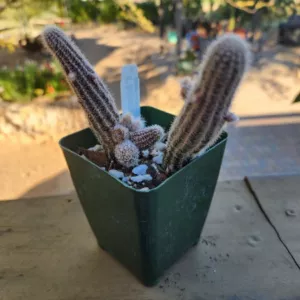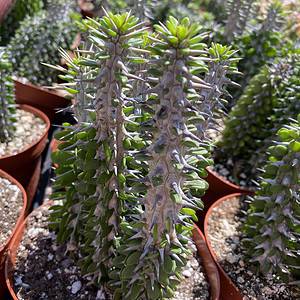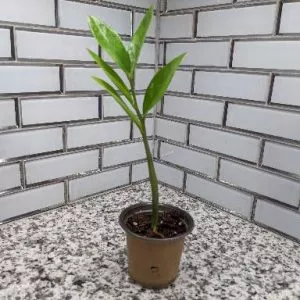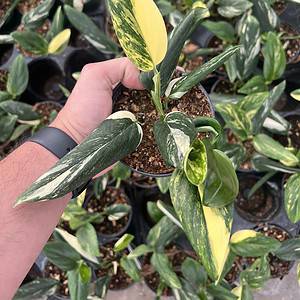No products in the cart.
Table of Contents
Assuming you have already chosen a cactus that is suitable for your climate and location, here are some general tips on how to take care of your cactus.
Cactus Plant Care
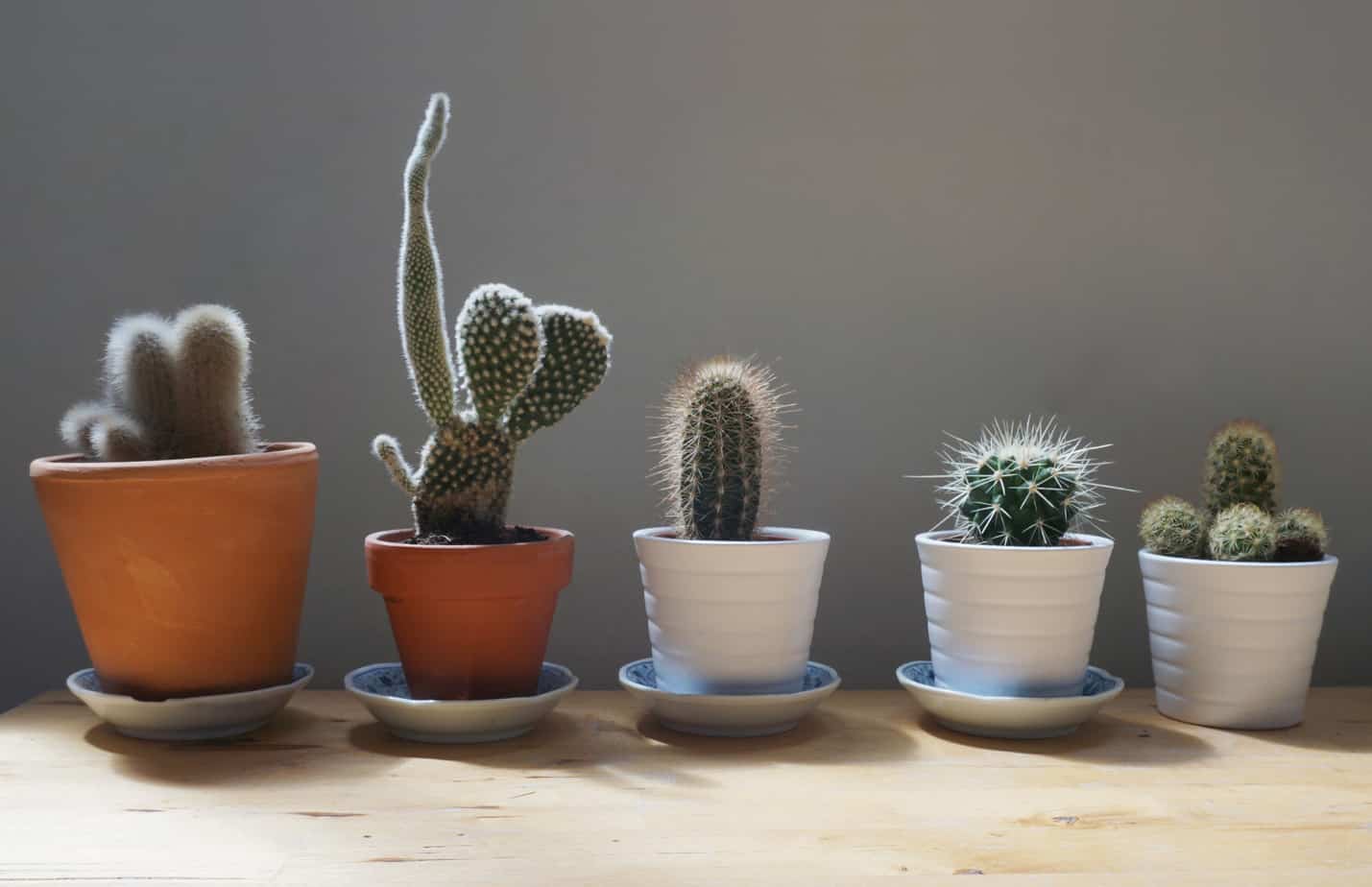
The cactus plant is one of the toughest houseplants to have. Whether you have a forest cactus or desert cactus, both present unique features with beauty. They make for statement pieces in bright-lit rooms. Some bloom after four years, while others never flower indoors. Yet, both groups are easy to care for.
Your Desert Cactus Love Direct Sunlight
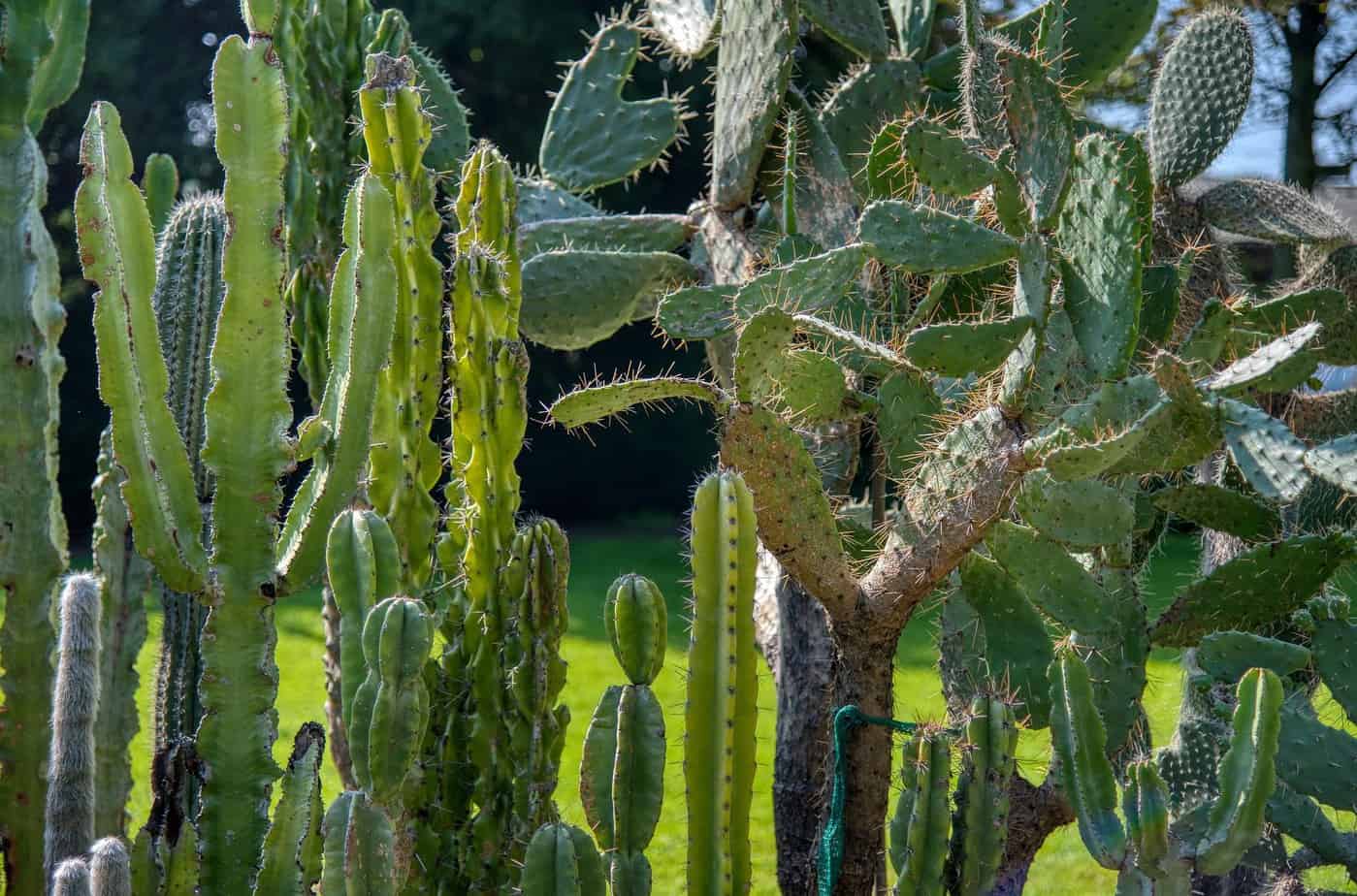
For cactus plants, light plays an integral part to keep them flourishing. If you have a desert cactus, it loves a sunny spot with direct sunlight for four to six hours a day. Yet, not all cacti prefer bright light as the Christmas cactus plants are the opposite. It loves partial shade.
Only 1 left in stock Only 1 left in stock In stock Only 1 left in stock
$9.00
Sold By:
Stripes and Variegations
Peanut cactus
Sold By:
Stripes and Variegations
$15.00
Sold By:
Stripes and Variegations
Monks Hood
Sold By:
Stripes and Variegations
$8.00
Sold By:
Smoot's Farm
Cactus Feather Mammillaria Plumosa Plant
Only 9 available and it’s in 2 people’s basket Rated 4.89 out of 5 based on 27 customer ratings00
Sold By:
Smoot's Farm
$10.00
Sold By:
Stripes and Variegations
Paper spine cactus or Pinecone Cactus
Sold By:
Stripes and Variegations
The only time your tropical cacti plants will need direct sunlight is in winter when they bloom. Therefore, it is essential to know the species you have to provide them with what works best for them.
You can place your cactus about four feet away from an east or south-facing window sill to provide adequate light indoors. The important thing is to keep rotating your indoor plant to prevent them from turning yellow or even white.
But if you feel that you cannot provide your cactus plant with enough light, another option is using grow lights.
Watering Needs for Cactus Plants
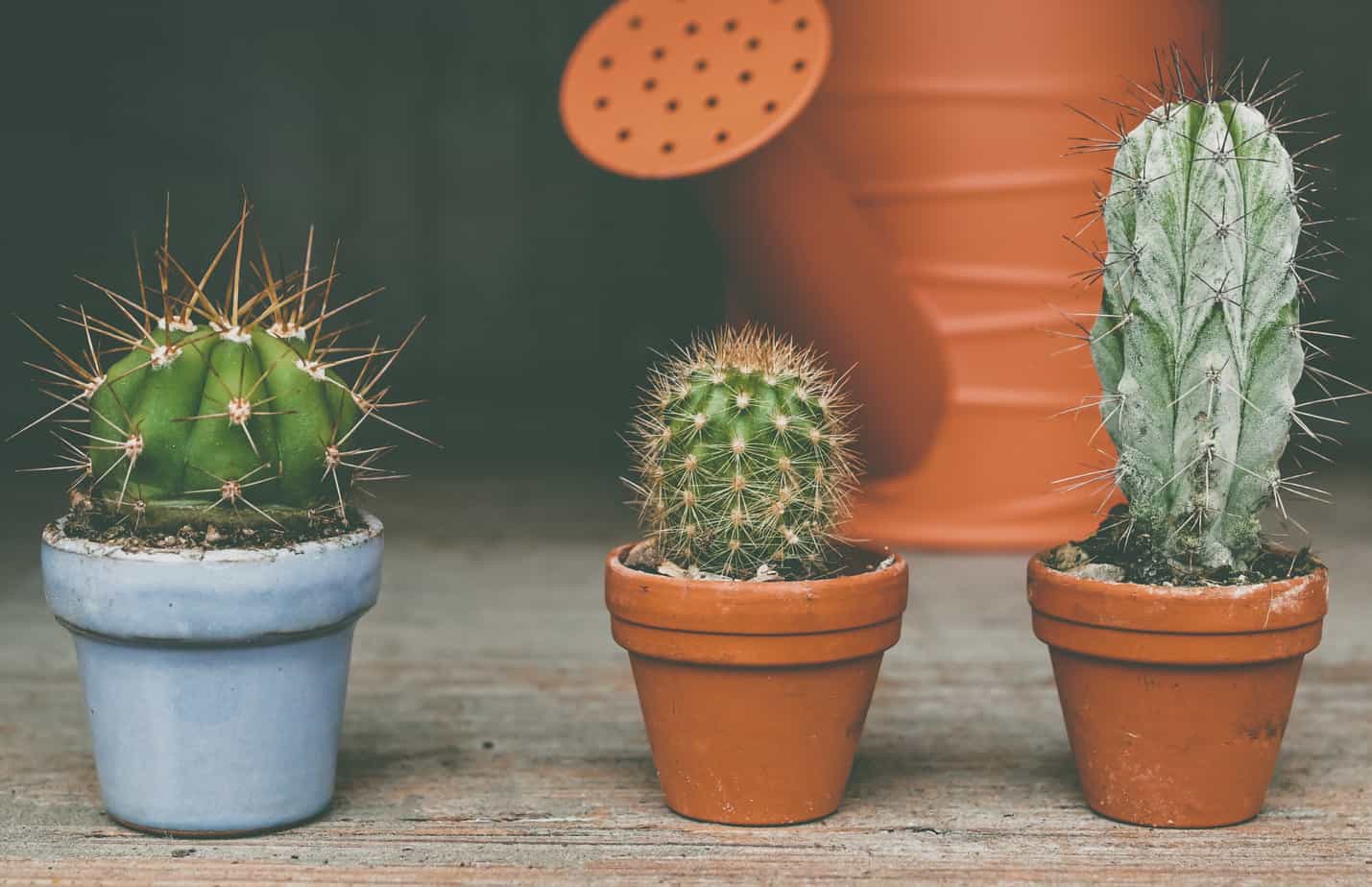
Cactus houseplants, even drough tolerant, still need watering. They might store water for dry seasons, but they start to turn yellow without water for too long. Hence, it’s important thing is to water when the topsoil is dry.
Another helpful note is that your forest cacti and succulents grow in warmer seasons. So, it would be best if you watered them often while in winter months to spring infrequent watering is enough. Still, it depends on your cactus species and where you have it placed.
If it is an outdoor plant in direct sunlight, it might need more watering than indoors. If you are unsure when to water your cactus indoors, you can always use a water gauge to show you the soil moisture.
While overwatering is not healthy for your plant, underwatering also has its downside. For example, your desert cacti will turn yellow or pale. Another factor to consider is your cactus size, and the bigger it is, the more water it will need.
Also, consider the pot size as a small pot works better as your plant does not love wet feet leading to root rot. The containers also need drainage holes for the water to drain freely.
The type of pot you use is essential as plastic pots take time to dry compared to terra cotta ones.
In stock Only 1 left in stock Only 1 left in stock Only 1 left in stock
$8.00
Sold By:
Smoot's Farm
Cactus Feather Mammillaria Plumosa Plant
Only 9 available and it’s in 2 people’s basket Rated 4.89 out of 5 based on 27 customer ratings00
Sold By:
Smoot's Farm
$9.00
Sold By:
Stripes and Variegations
Peanut cactus
Sold By:
Stripes and Variegations
$10.00
Sold By:
Stripes and Variegations
Paper spine cactus or Pinecone Cactus
Sold By:
Stripes and Variegations
$10.00
Sold By:
Stripes and Variegations
4 inch Variegated Agave Isthmensis / “Dwarf Butterfly Agave
Sold By:
Stripes and Variegations
Ideal Cactus Soil Mix
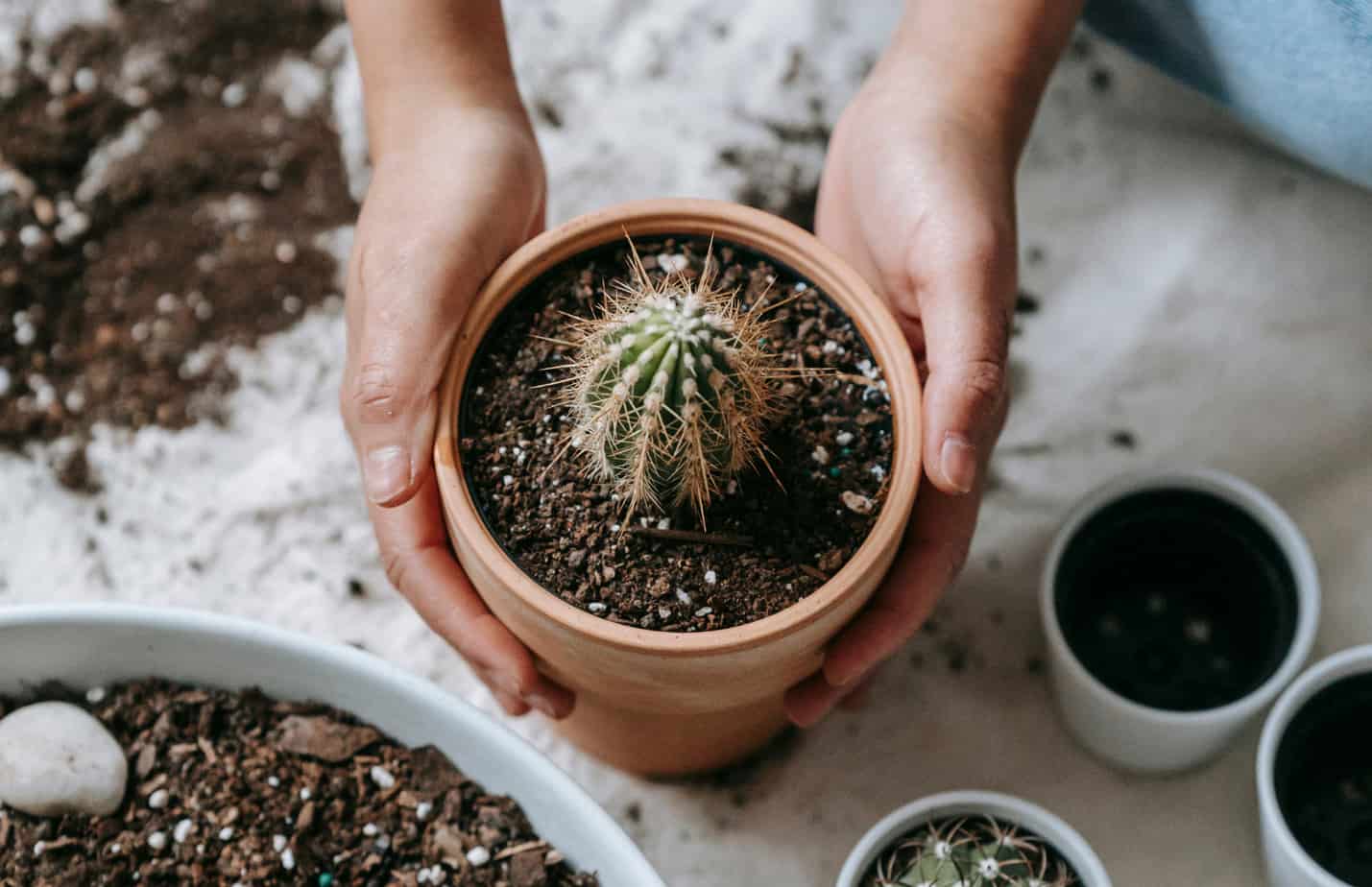
When it comes to the cactus soil mix, it depends on the cacti and succulents you have. Some cactus plants flourish in sandy soils, while others grow in tropical areas. Hence, it is essential to know your species choosing a potting soil.
Tropical cactus plants need airy, well-draining soil, also known as forest cacti. So, they do require more organic matter in their soil mix. But, at the same time, arid cacti can not grow in poorly draining soil.
For the best cactus soil mix, you can find ready mix options available, or you can make one yourself. For example, you can mix equal parts ground fir bark with peat moss in a bucket for cacti species. You can add some builders sand to your tropical cactus to the mix.
For your desert cactus, you mix pumice or vermiculite instead of the builder’s sand. Ensure that it is well mixed and water it well before placing it in the planters. You can leave it for up to an hour and squeeze out the excess water from it.
At this point, you need not add fertilizer as the soil mix above provides nutrients needed to grow.
Best Fertilizer Choice for Healthy Cactus
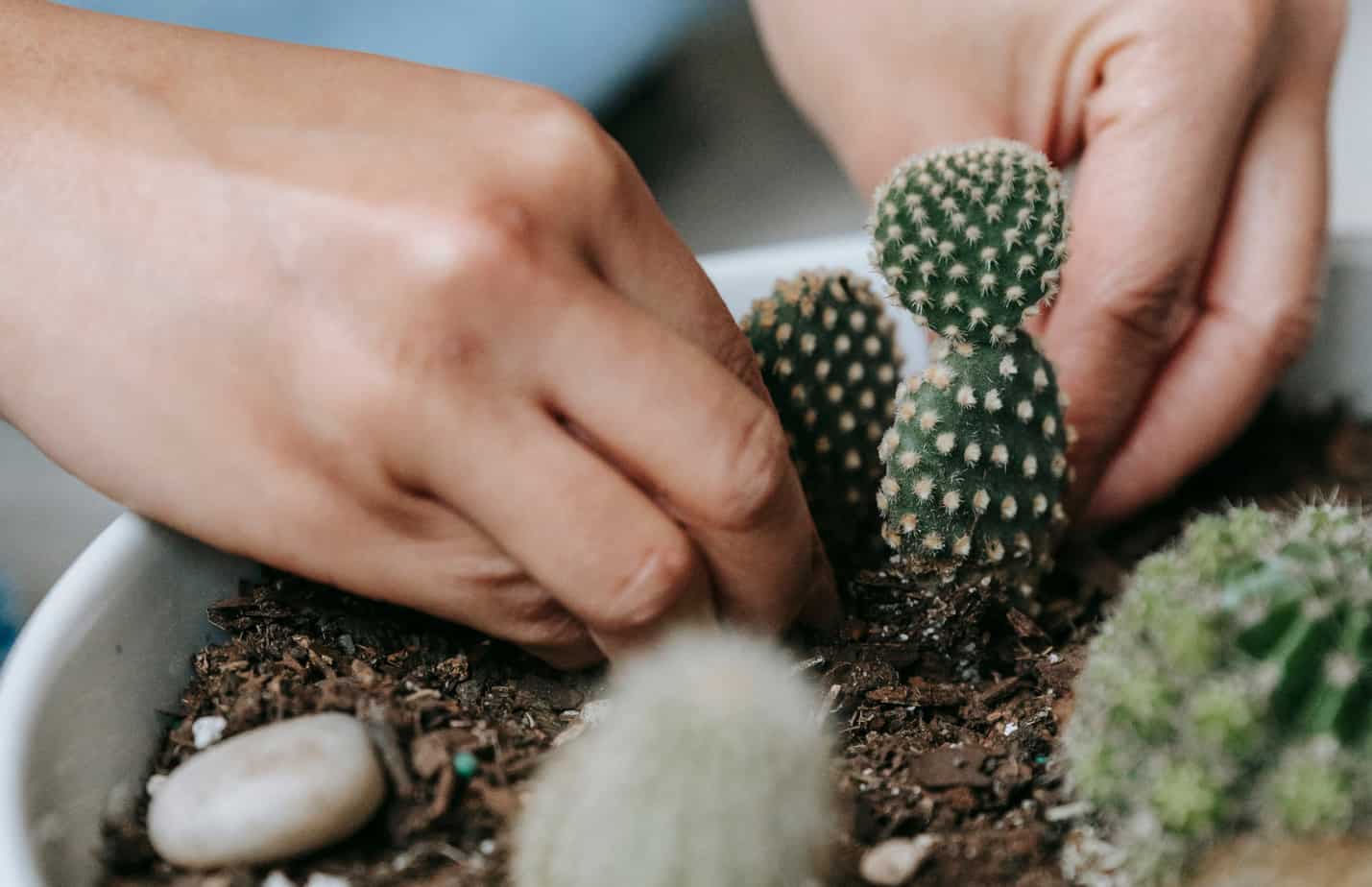
As with any indoor plant, your cactus needs nutrients to flourish. When it comes to fertilizing your indoor cactus, it helps to get one designed for succulent plants. Most cacti grow in the warmer months and need added nutrition at the time.
We recommend a low-nitrogen feed high in phosphorus to maintain its healthy look. Furthermore, we recommend feeding your cacti only when you see new growth. You can use one tablespoon of the feed mixed with one-gallon water to water your plant for feeding.
You can use the mixture every eight weeks in the spring and summer months. For the Christmas cacti that bloom in winter, we recommend feeding them at this time.
Only 1 left in stock Only 1 left in stock In stock In stock
$9.00
Sold By:
Stripes and Variegations
Peanut cactus
Sold By:
Stripes and Variegations
$10.00
Sold By:
Stripes and Variegations
4 inch Variegated Agave Isthmensis / “Dwarf Butterfly Agave
Sold By:
Stripes and Variegations
$31.99
Sold By:
Succulent Oasis
False Ocotillo Cactus
Rated 4.84 out of 5 based on 352 customer ratings00
Sold By:
Succulent Oasis
$12.00
Sold By:
Smoot's Farm
Cactus Bishop’s Cap Hat Astrophytum Myriostigma 3” Pot
Rated 4.89 out of 5 based on 27 customer ratings00
Sold By:
Smoot's Farm
Temperature and Humidity
Different species of cacti prefer different temperatures and humidity. But most cactus types love a hot, dry temperature and prefer cooling down in winter. On the other hand, the desert cactus can thrive on chilly nights outdoors. But if you have an indoor cactus, you need to protect it from sudden winter drafts. For humidity, your forest cactus prefers the air with some moisture.
Common Pests & Diseases
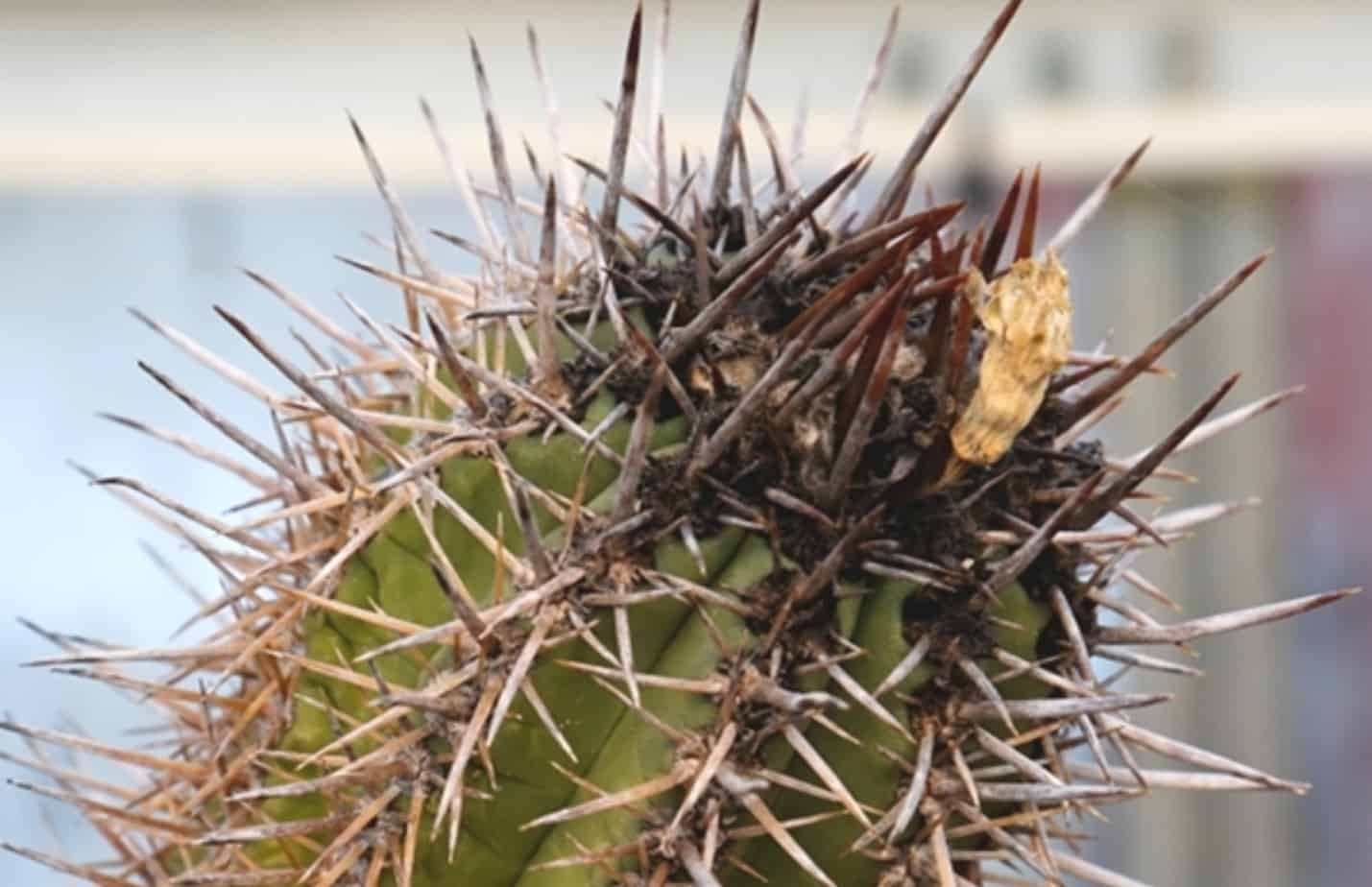
The most common problem with cacti is bacterial and fungal diseases caused by too much water. Still, occasionally your plant can become the home of pests. Some of these insects are mealybugs and scale.
Mealybugs have a white yet waxy cotton-like appearance and are difficult to spot. You find them mainly on the underside of the leaves and stems. Sometimes they can attack the roots.
While scale insects are similar to mealybugs attacking the stems and leaves, another pest is spider mites and fungus gnats. The latter you find primarily in the soil depriving your plant of nutrients.
To control mealybugs, it helps to use cotton swabs dipped in alcohol to remove them and scale insects. Spider mites you can wash off with a spray of water or use an insecticidal soap but needs extra care as the soap can damage the wax on the leaves.
Where Can I buy Cactus Plants?
Here at Plantly, we have a vast selection of cacti and succulents for you.
Conclusion
Cacti are generally easy to care for. However, it doesn’t mean that you can just leave them be. They need your attention in order to flourish. Make sure to follow all of Plantly’s tips above. Make your cacti plants happy!
Whether you want to buy, sell or simply reach out to other plant enthusiasts, Plantly is the right place to be!
In stock In stock In stock
$15.00
Sold By:
Juan's Grow Garden
Zamioculcas ZZ plant – 3.5 inch pot
Rated 5.00 out of 5 based on 12 customer ratings00
Sold By:
Juan's Grow Garden
Free Shipping
$394.79
Sold By:
BONSAI WORLD LLC
Variegated Hawaiian Umbrella Bonsai Tree Root Over Rock
Only 1 available and it’s in 1 people’s basket
Sold By:
BONSAI WORLD LLC
$70.00
Sold By:
Andy Nursery
$75.00Red Finger Lime Grafted Citrus Tree. 2 Feet Tall.
Only 47 available and it’s in 1 people’s basket
Sold By:
Andy Nursery
